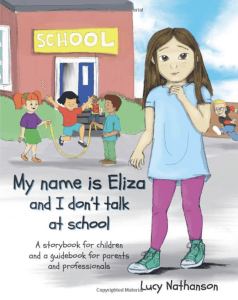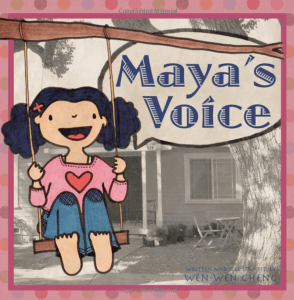In my last blog, “Could Your Child Be Experiencing Selective Mutism?“ I discussed the details of selective mutism: what symptoms to look for, the causes of selective mutism, and when to seek out professional help. By now you’ve met with your child’s pediatrician and discussed your concerns. They will refer your child to a mental health professional who specializes in selective mutism and anxiety-based disorders.
After hearing the potential diagnosis and setting up an appointment with a therapist, the first thing you can do is take some time to process your feelings. There can be a multitude of emotions for you as the parent(s). These can range from sadness (“Why my child?”) to fear (“What do we do now?”) or maybe disbelief (“Is this really happening?”). Please know that these feelings are normal, and with the help of a mental health professional, your child can begin the journey to developing confidence and finding a brave voice.
What Do I Tell My Child?
An important point to remember to discuss with your child is that they are not in trouble because they remain silent in certain situations. Sometimes children who go to child therapy feel they are being “sent” there because they have done something wrong. This should not be the case. Children with selective mutism are no exception. Having a conversation with your child is an important step to take before going to therapy. Listen to their concerns and questions after you have informed them that they will be seeing a child therapist at Brave Minds. If there is something you feel you are unable to answer, let them know that together you can ask their therapist.
Explaining Selective Mutism
One way to explain selective mutism to your child is with an age-appropriate book, such as “My Name Is Eliza And I Don’t Talk At School,” “Maya’s Voice” or “That Question.” This can help your child identify themselves in a book.
In addition, it offers hope and inspiration for their journey on the path to finding their voice. Use language that they can understand and situations that have been difficult for your child as examples that illustrate their struggles. Let your child know that there is nothing wrong with them, they aren’t broken, and that you want to help them overcome their struggles. I recommend using age-appropriate language. For some children, this might be discussing the “worry worms” that come when it’s time for school or talking about how they freeze and their throat feels like it is closing up when they try to speak. For older children, you might be comfortable talking openly with them about selective mutism and explaining what that means. The important thing to do is to communicate with your child about going to see the therapist so there are no surprises.
What Happens Next With A Child Therapist?
Your child’s therapist will want to take time to build a good rapport with both you and your child. This is important because you want your child to feel comfortable and safe within the therapeutic setting. More than likely, there will be nervousness and anxiety in those first weeks of therapy. Rest assured, your child’s therapist knows to expect this and will try to put your child at ease. They will get to know your child and understand the concerns you are coming in with.
Next, the therapist will want to coordinate with your child’s school team. This can include teachers, specialists, guidance counselors, etc. This is an especially important step because we want to ensure the professionals involved in your child’s life understand selective mutism. This includes how to work with their student (your child), and the importance of consistency in the strategies and techniques that are implemented within the educational environment.

Accommodations In School For Selective Mutism
Children with selective mutism may qualify for a 504 Plan. This is a document that will outline any accommodations necessary for your child to have success within the educational environment. It can be an appropriate approach for children with mild to moderate selective mutism who do not need intensive services in school.
Accommodations that can be written up in your child’s 504 Plan could include:
- Allowing the student to participate nonverbally (nodding, pointing, writing, etc.) until they find their voice and feel more comfortable speaking.
- Allowing the student to sit with a preferred friend instead of having assigned seating.
- Providing the student with adaptations to speaking assignments. For example, student can record themselves instead of speaking in front of the class. They can present to the teacher one on one. They get to be in smaller groups to present rather than in front of the whole class.
- Allowing the student to use a bathroom pass that they can freely take instead of having to request the bathroom.
- Removing any negative consequences for not speaking.
A team approach should be taken when writing up the accommodations for a 504 Plan. It is something that should evolve over time as your child makes progress.
If your child’s selective mutism is more severe, they might qualify for an Individualized Education Plan (IEP). This is a legal document that will not only provide the necessary accommodations for your child in school but will also give them direct individualized services. Such as working one on one with a specialist. The goal of this will be to help your child generalize talking in the one-on-one setting to speaking in the classroom.
Your child’s therapist and school guidance counselor might recommend lunchtime activities (such as a “Lunch Bunch”) to benefit your child. This will provide your child with the opportunity to eat lunch, and socialize, with peers under the guidance of their counselor. They can play games and practice conversations in a relaxed, but the slightly structured, environment.
Establishing Other Goals With A Child Therapist
As a child therapist who works with children with selective mutism coordinating treatment with the parent(s) and teachers is a step forward in helping your child find their brave voice that is beneficial. Together we can come up with appropriate, individualized goals for your child that can be worked on in between child therapy sessions at home, at school, and when out and about.
Examples of goals are:
- Appropriately greet a familiar friend at the playground.
- Greeting your teacher with “Good morning”
- Say “Thank you” to the cashier in a store.
- Saying “Hi” to the doorman when entering your apartment building.
- Say “Hello” to a neighbor when you see them.
These are real-life situations that frequently occur and success in these can help build your child’s self-confidence. This will encourage them to continue speaking in situations they used to dread. It will provide your child with the positive reinforcement they need.
Moving Forward

In my next blog in this series, I write about individual therapeutic techniques for working with your child. I provide resources for you and your child as you embark on taking on the challenges that come with a diagnosis of selective mutism.
Start Meeting With A Child Therapist in Scotch Plains, NJ For Selective Mutism
If your child has selective mutism our child therapist can help you create a plan moving forward. At Brave Minds Psychological Services we want to provide you with the resources that you and your child need as you navigate selective mutism. In order to get started in child therapy for anxiety follow these steps:
- Connect with Brave Minds Psychological Services today.
- Receive a free consultation with a compassionate child therapist.
- Support your child in navigating selective mutism
Other Counseling Services We Offer In Scotch Plains, NJ
Our licensed therapists and counselors offer therapeutic services for children, teens, and adults. Available services for children and teens include anxiety counseling for children, child sexual abuse therapy, anxiety treatment for teens, and teen social phobia therapy. Our adult mental health services include adult anxiety counseling, couples counseling, counseling for parents, postpartum counseling, birth trauma therapy, and sexual assault counseling. If you’re interested in learning more about our services here at Brave Minds Psychological Services or online, please contact our Scotch Plains counseling office! Proud to serve Scotch Plains, Westfield, Cranford, New Providence, and the surrounding areas in New Jersey.







One thought on “Helping Your Child with Selective Mutism”
Comments are closed.